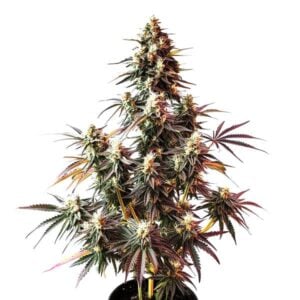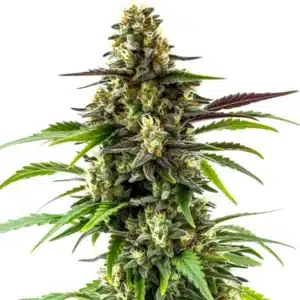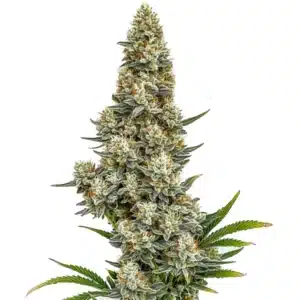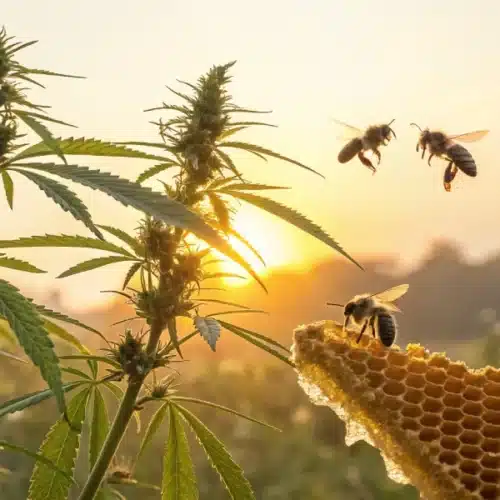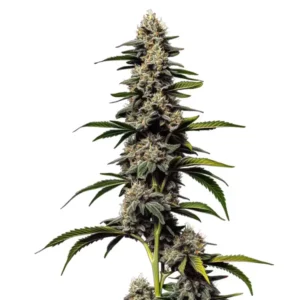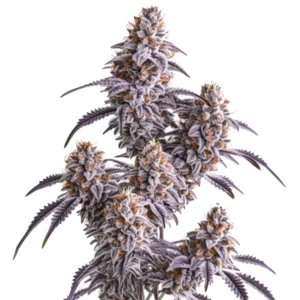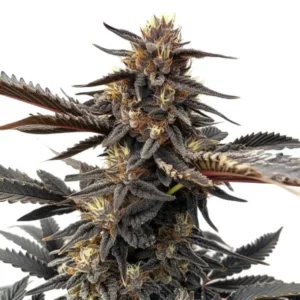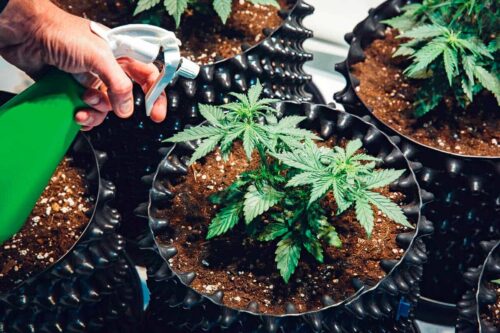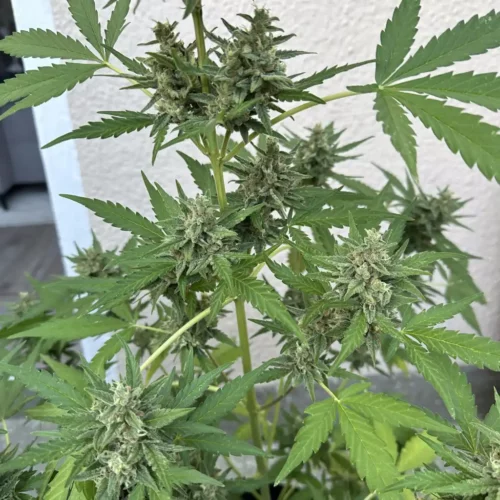In this blog, you will be able to learn what defoliation is, how to defoliate your ganja plants, and what is the importance of carrying out this cultivation technique in marijuana. For instance, strains like Ultra Violet OG, Oregon Underdawg, Kosher Kush x Tangerine, Early Skunk x Rosetta Stone, and Critical Blue may benefit from defoliation, resulting in denser buds full of resin. Sometimes, if not trained or pruned, marijuana plants can give rise to fluffier and lighter buds. The former occurs because the leaves of the plant cover part of the light that should reach the buds. So, performing a defoliation helps to improve the results of your harvest. Do not be afraid to apply defoliation to your ganja plants. This guide will show you all the steps required to use this technique like professional growers.
Defoliation of Cannabis
First, we are going to tell you that defoliation is a cultivation technique that is based on removing the leaves of the plant, either during growth or once before flowering begins. This cultivation technique is also used in other areas of agriculture, for example: in potato, tomato and cotton cultivation. Its practice in gardening is also common, especially in the art of bonsai. Now, if we talk about the cultivation of ganja plants, the effort to maximize production yields in small spaces or large farms with a limited number of plants or gigantic plantations, applying defoliation to marijuana is attractive for growers.
Despite this, we must make it clear that defoliation is an aggressive technique. Its use does not come without controversy and has as many loyalists as detractors. In this article, we are going to explain the process of applying defoliation and its objectives as well as explaining the pros and cons of this technique in your cultivation of ganja plants. We emphasize that the main objective of defoliation of ganja plants is to direct the production of the plant to the formation of buds. Growers accomplish this by removing the leaves from flowering marijuana so that the plant spends its energy on creating larger flowers, rather than on maintaining the leaves. For this reason, defoliating the weed plant changes the growth patterns of cannabis specimens.
Taangie from Cultivar with Character line, created by Blimburn Seeds feat Nikki and Swami
As you can see in the photo, the defoliation technique was taken from these Taangie, a variety from the Cultivar with Character line by Blimburn Seeds and created together with the legendary breeders and cannabis activists, Nikki and Swami. This cannabis plant of Taangie genetics has been cultivated in hydroponics and the lower part of its branches were extracted by means of defoliation to enhance the flowering process in the upper part of the plant and thus obtain buds with the shape of a fox tail. This shape happens because of the increase in size that occurs throughout, giving rise to such explosive and appetizing results.
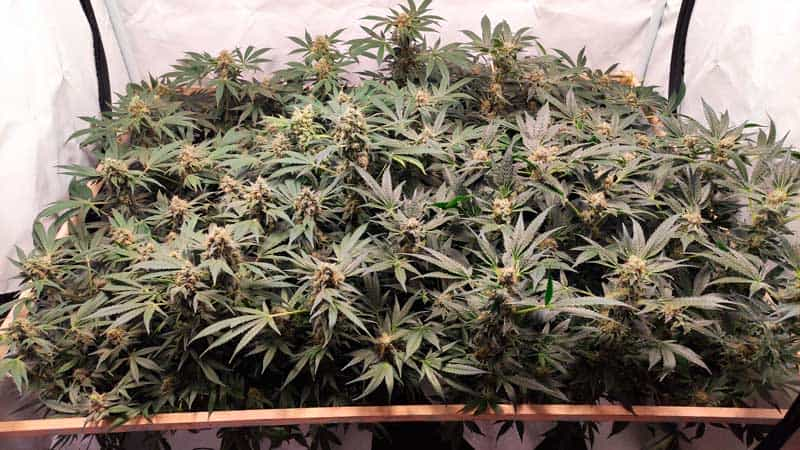
Taangie from Cultivar with Character line, created by Blimburn Seeds feat Nikki and Swami
The upper tips of the plant go up full of flowers and take up all the space in the mesh because this Taangie was also trained with the SCROG system, allowing her to further maximize her performance. So, the proof that yields can be heavier when grown with a defoliation system is in sight.
We can also point out that this method has certain similarities with other marijuana training techniques, among which the following stand out: Supercropping, Low Stress Training or Monster Cropping. At the end of the day, these are all ways to train your plant to improve its production results. Although they may seem risky, they are methods that if followed step by step, there is no danger to your harvest. On the contrary, it would give very substantial increases in your production. However, if you are a beginner, it is best to get some experience with plants before using these techniques.
Promos & Deals
Defoliation of ganja plants in growing
First of all, we must be clear that the ganja plant must be strong and healthy before applying the defoliation. It is necessary that it measures between 25 and 35 in height and its central stem must be a considerable width. Also, the lateral branches must have the necessary hardness to support the weight of the leaves. Here, you should cut only the largest leaves, leaving enough leaves for the plant to photosynthesize so it can continue to consume the nutrients you give it.
When, starting in the vegetative phase with defoliations, we train the plant and prepare it for subsequent defoliations. This also helps us get rid of pests because if there are no leaves, there are no bugs. This is also the case for moisture problems such as powdery mildew or mold. On the other hand, by eliminating excess foliage, we will maximize the energy of light which will reach the lowest areas and promote air circulation, providing better ventilation.
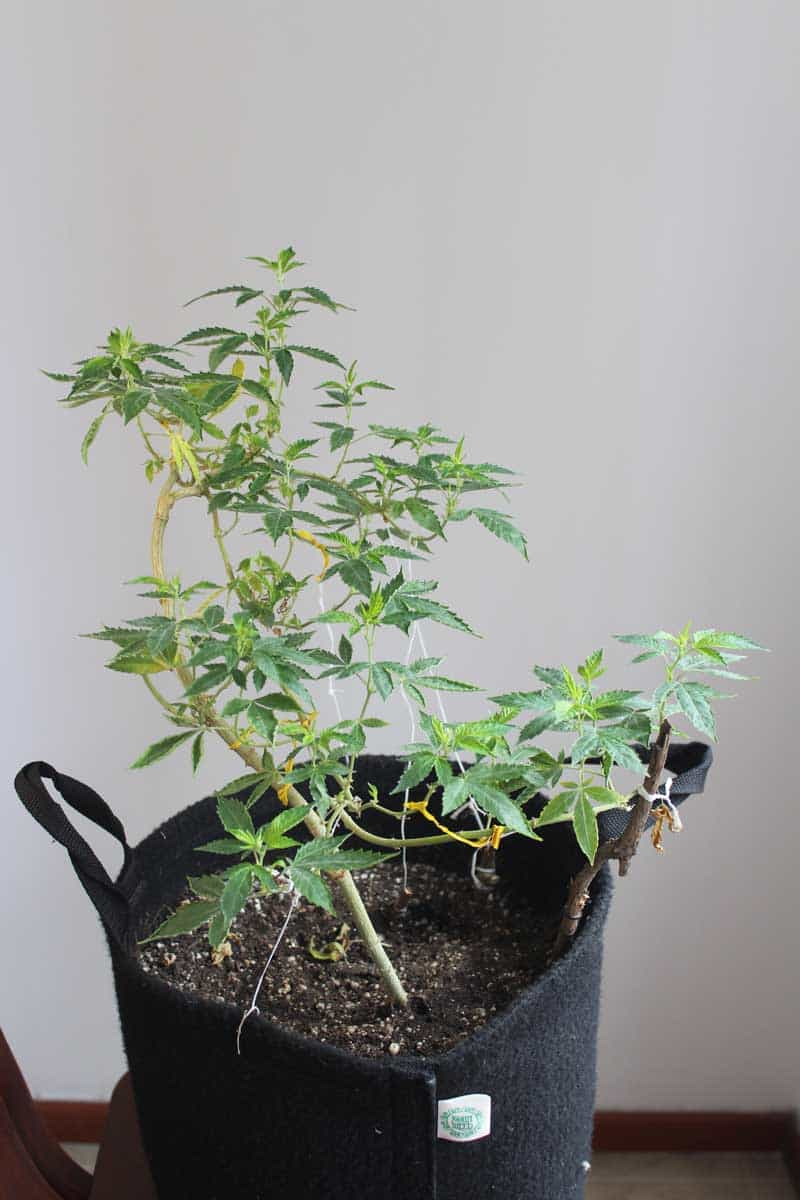
White Widow from Blimburn Seeds with a defoliation in growing time and LST.
Now, you will notice that defoliation seems to slow down the growth of cannabis plants. This can cause a great imbalance in a plant that is in a vegetative state. For the same reason, it is recommended to use products that help lower the stress levels of the plants and also stimulants that protect the roots. There are a wide variety of these products on the market. It is important to take these tips into account because if the nutrient levels in the soil are low and the plant does not have the necessary stimulants and protectors, defoliation will hit our plant hard and it will recover much more slowly.
At this point, it is good to be patient because we are interrupting the plant’s growth process and it will have to start again. A defoliated plant will always grow more slowly than one that follows its “natural” process. If we have done it right, in 1 or a maximum of 2 weeks, we will have thick and strong foliage again.
Defoliation of ganja plants in flowering
Gardeners do this type of defoliation at the beginning of the flora when the plant begins to show the first pistils. It consists of extracting the large leaves and their excess in order to allow the light to penetrate better. Then, after 1 or 2 weeks, you will see how the leaves are born again. After about 3 weeks, the plant can be completely bushy.
After this defoliation and with the plant already recovered from stress, you can proceed to carry out a new defoliation. The objective of this technique is to remove the large leaves that cover the buds that are formed in order to allow the plant to receive as much light as possible. This will help them unfold and produce more uniform and resinous buds.
When you apply this technique, you must be careful with the buds so as not to damage them. Also, it is good to tell you that auxin production is stimulated when the plant is defoliated. We emphasize that auxins are plant hormones responsible for flower growth and inducing their maturation in ganja plants. When the plant recovers, this causes the buds to grow quickly with fat, heavy, and compact structures.
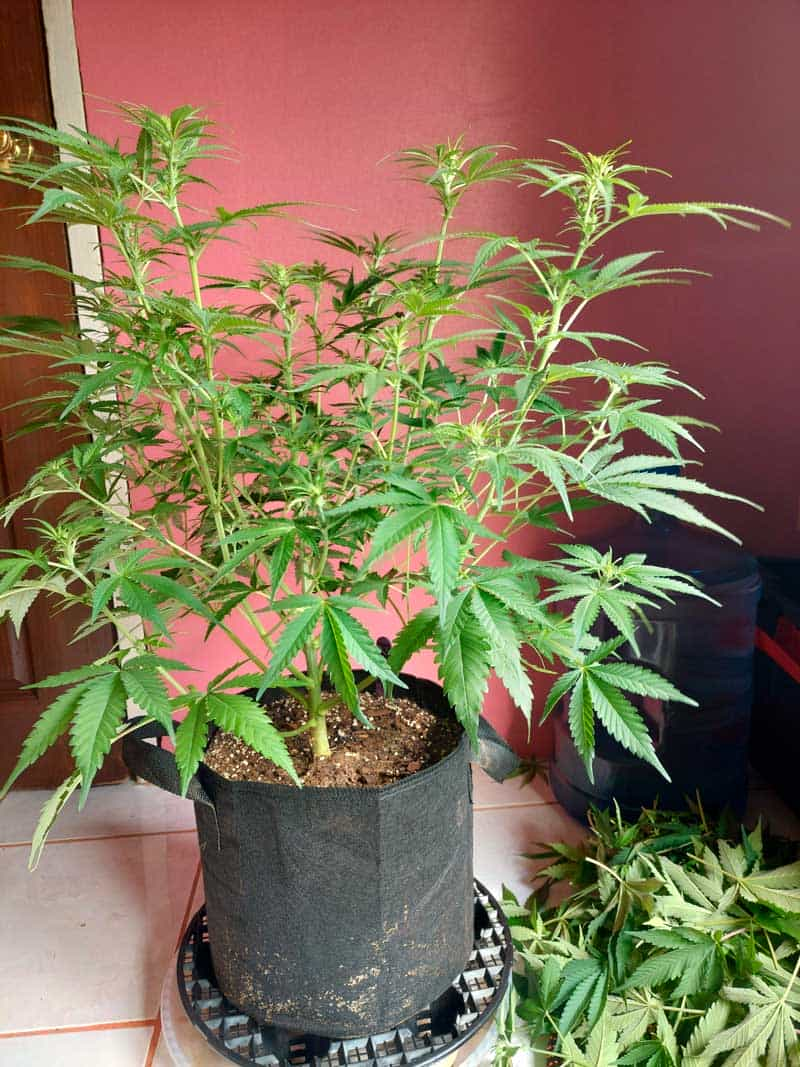
Mamba Negra CBD from Blimburn Seeds with defoliation in flowering.
In the case of this Mamba Negra CBD, you can see how the gardener has removed the leaves of the plant to allow the buds that are in formation to develop more powerfully. An important point is that this mostly indica strain develops a dense and compact structure, therefore a good defoliation does not hurt and helps a lot in flowering with the necessary ventilation.
Defoliation in late flowering
After about 2 or 3 weeks of having defoliated the plants, you will notice how new leaves are born which allow the plant to breathe and photosynthesize. This is when we must remove most of the largest leaves that are left on the plant for the last time (they are usually the satellite leaves). This makes the plant concentrate its power on the production of buds and their maturation.
Green Crack, a mostly sativa strain from Blimburn Seeds, showing the power of defoliation.
You will want to carry out a new defoliation in late flowering when the buds are developed and you can see that some of the leaves prevent it from receiving the necessary light for its growth. Also, a technique very used by breeders during flowering is lowering the panels when using LED lighting, both to the middle parts and the lower areas of the ganja plants. With this, they ensure that the light reaches in the best way and the buds develop with all the necessary power.
Now, if you grow with sodium lighting which generates a lot of heat, we recommend that you complement the lighting with LED lights in the lower parts so that those buds can get the lighting they need without being at risk of burning or suffering light stress as could happen with sodium lighting. When the plant is already mature with its buds that are swollen in THC, the leaves are usually short and emanate from the flower, standing out above the vegetative cover, unlike plants without defoliation where the buds are usually covered by the green leaves.
Some disadvantages of defoliation
In this article, we have seen the main advantages and reasons why we should defoliate the ganja plants in the garden. However, there are also certain disadvantages when applying these techniques. For this reason, we are going to tell you about some of the disadvantages so that you are clear about what can happen to you if you apply this technique to your crop.
1- First, as we have already said, the leaves are the receptors of light and also the means by which plants photosynthesize, that is, they store energy and then distribute it throughout the plant for its food needs, including the production of buds. Therefore, if the ganja plant is not defoliated in a good way, it can suffer from problems in its development and therefore generate problems in the crop.
2- We emphasize that not all vines respond well to defoliation. Each strain reacts in a different way. The biggest risk of defoliation is that we don’t know how our plant will react until we see the results. Therefore, it is good to get advice and review which strains have a better performance against defoliation in the crop. For example, we have recommended some strains of cannabis seeds that you can buy here at Blimburn Seeds.
3- Despite the fact that stronger and more resistant leaves are born, some experts say that the production of buds and their size look smaller and in less quantity when the ganja plant goes through different defoliations. For the same reason, the caliber of weed flowers can be diminished if defoliation is applied repeatedly to the plant. Also, we can add that the use of supplements such as diatoms that help the roots of the plant and its entire structure and protect it from insects and pests can help you. Also, using food supplements as stimulants through irrigation foliar can enhance the new leaves and supplements help calm stress that can be applied by means of foliar and root irrigation.
Defoliation of autoflowering weed plant
For those who ask us if it is possible to defoliate autoflowering weed plants, it should be understood that this is an advanced technique that generates stress in plants and therefore can affect the production of autoflowering weed plants, reducing their yield. This is a general rule because in some cases, the most expert gardeners can successfully overcome these challenges. Some of the advantages of defoliating autoflowering weed plants is that you control the size which helps prevent the appearance of pests and fungi in weed plants in the garden.
Now you are ready to perform the best defoliation to the cannabis plants in your garden thanks to everything that we have told you in this guide. Remember to keep visiting the other posts on our blog where you will learn more about growing weed, the latest cannabis trends, and much more.

